Children's creation workshops
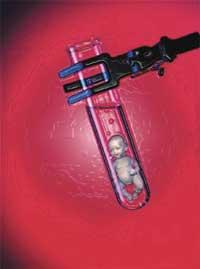
Although the statistics have set their number by 15%, the gynecologist Mari Jose Iñarra says that more and more couples are not getting the pregnancy. She works at the Quirón clinic, in the Assisted Reproduction Service. Couples who come to the consultation focus on age. “If the girl is under 30 years old, the couple should wait at least two years to think she has any sterility problem, and if she is over 30 it is enough a year.”
Coitos directed by Coitos directed
However, before going to the Assisted Reproduction Services, couples tend to go to the usual gynecolos, to ordinary consultations. If there are no physical problems, treatments are applied to make ovulation stronger, to make it ovulate more. In the days of higher female ovulation, the couple must have sex. “This is what is known as corrected intercourse,” says Dr. Iñarra, “and so many couples have managed to bring the children.” These treatments have replaced the pills with hormones. However, the treatment is basically the same, the reinforcement of ovulation, the knowledge of the days in which you have to ovulate and the contact in those days.
Couples resort to assisted reproduction services when the directed coitos fail. Although the one who has to become pregnant is a woman, the first thing they look at is the seed of the man, since the worse the seed is the less possibility of provoking pregnancy. “The quality of the seed has decreased dramatically. According to the World Health Organization, it was previously said that a concentration of 60 million sperm per milliliter was normal, while at present the seed with 20 million sperm is considered quality. Of the couples we have, the problem in 80% is the male seed, the scarce seed”.
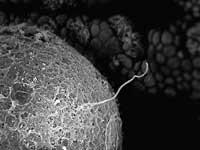
There are many theories about the decline in seed quality, among which are mentioned environmental problems, lifestyle, stress, etc., but there is still no clear answer. “The male seed begins to deteriorate with age, that is true, but this occurs between the 60-70 years. It is not like a female menopause. In women, aged 18 to 35, the chances of getting pregnant are great, with 35 beginning to decrease and from 38 they are lost enormously. At age 30, however, the chances of pregnancy are 10-15%; at age 38, 2%.”
Spermatozoa solutions
Despite the importance of the female age, the greatest number of problems is due to seeds. The absence of sperm in the seed, the death of all those present, or the little mobility of the existing ones are factors that make man sterile. The problems of the seed mark the treatment to be carried out, since the seed itself has no treatment.
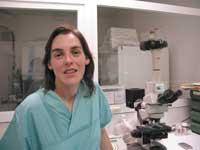
“Urologists have provided hormones to improve the seed, but it does not improve. It is not worth wasting time like this, paying what is worth this type of treatments and having to take injections. If there is something to improve, it can be improved in the laboratory. Various processes can increase sperm concentration and increase sperm movement.”
Once this type of process is completed, techniques are used based on results. “If we get 5 million sperm that move well per milliliter, we can do insemination.” Despite not reaching that figure, María José Iñarra says that insemination can be carried out, but it is not worth it because “the seed is scarce and the chances of pregnancy are minimal”. Insemination is an adequate and simple solution, since it can be done in the consultation itself without entering the operating room.
If, after completing the improvement processes, the seed does not reach the necessary quantities, insemination is rejected and laboratory solutions are used. The woman is extracted from the eggs and in the laboratory you have to get embryos with the eggs and the seed. It is in vitro fertilisation.
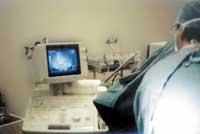
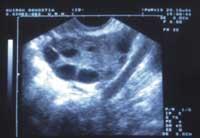
There are many forms of in vitro fertilisation. Before, the egg and sperm, once prepared, were put together to see if they were able to integrate or not. After a couple of days the existence or not of embryos was verified. If this integration was not achieved, there was no task, then in vitro fertilisation ended. Currently, the possibilities are greater. “Now, when the seed is very bad, we can make intracytoplasmic microinjections, that is, take the egg and introduce the sperm inside. We look at how many embryos are two days away. Let's take those embryos, put them in the uterus, and it's already! !”
Although the technique is the same in the base, they have created numerous possibilities and variants. “We leave the sperm in the nucleus of the egg, in the cytoplasm. Two days later, we have to find the embryo of two or four cells, the gamete. We can also spend five or six days and then you can get blastocysts. Blastocysts are larger embryos, which increases the likelihood of pregnancy. However, many embryos are often left in the laboratory and then blastocysts are not obtained, and then there is no pregnancy. However, we first use embryos of two or three days. If with these two or three times a pregnancy is not achieved, then in the laboratory we try to blastocistar these young embryos”.
These techniques solve the problems of 40% of couples who turn to doctors. The improvement is evident, but even more evident in the case of donors. In fact, both the seed and the egg can belong to the couple, one of them to a donor or both to donors. The possibilities are multiple, which has allowed to solve the problems of many couples, but the same abundance has generated ethical debates in society.
From technical solutions to ethical debates
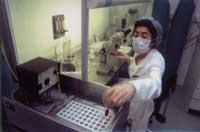
One of them is that couples of the same sex bring children. Despite being a topic that can generate debate in society, in assisted reproduction services is an everyday theme. “Many lesbians come to us, especially French. For us the presence of the woman or of the couple is similar, since it is the woman herself that gives permission to perform insemination with the seed of a donor. The law says it has full right. Some women also come alone, more and more. Throughout the years we have many who have no partner. They need children, but they have no partner and come to the consultation with that option.”
The choice of sex of the child is also in the bag of ethical debates. It is not legal in the Spanish state, unless some illness can be transmitted along with sex. For example, if the child who is going to be born is small when you know that he will be hemophilic, you can choose sex. In these cases, a pre-implicit genetic diagnosis is made, consisting of the verification of the embryonic sex chromosomes, that is, the separation of the X and Y chromosomes and the selection of the necessary ones. “There are many discussions about this,” says Dr. Iñarra.
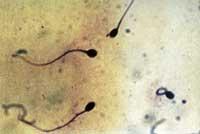
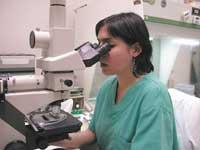
For example, if a couple has 3 boys and wants to bring girl, who am I to say no? I am no one, but for the moment the law does not give that opportunity. That’s why many people go to the United States to bring their children, where choosing sex is legal.” In addition to selecting sex, if chromosomes are observed, it is possible to know if the embryo is sick or not. Of course, this makes only embryos are used in good condition. It is believed that pre-implicit genetic diagnoses will open many doors, more pregnancies will be achieved.
Therefore, in these techniques the best embryos are always chosen, while the remaining ones are frozen. The legislations in this matter are very different according to countries. Aside from legal issues, these embryos could be reserved for the use of owners, handed over to another partner, or used in research.
María José Iñarra sees it clear that the topic will generate debate. “Over time, therapeutic cloning is supposed to be accepted. Obviously, if this is accepted it is clear that there is a possibility to make other cloning, use them to multiply cloning. Men, through their cells and their seed, helped by someone's utero, could create a child that looks physically like them. The therapeutic use of embryos opens many doors, since from the leftover embryos would come stem cells.”
Stem cells are what researchers look for from human embryos. In fact, stem cells are totipotent, they can become any of the cells that make up the human body. They are the most desired jewelry for medicine. Experts say that the stem cells injected into the liver, for example, would be able to repair the organs affected by cirrhosis or hepatitis, or hearts infarcted, cure the pancreas of diabetics, etc. Even in reproductive techniques, the possibility of using stem cells could provide benefits, since they could form oocytes or spermatides. In the case of the mouse, for example, this year has been achieved.
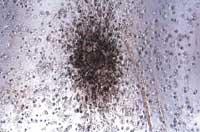
The advance of the legislation and the routes and speeds chosen by the evolution of the technique is not easy. However, if things do not change much, it is expected that with these techniques, more and more precise pregnancies are achieved, that is, that the efforts to solve the problems of sterility are not sterile.
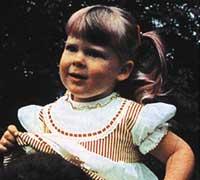
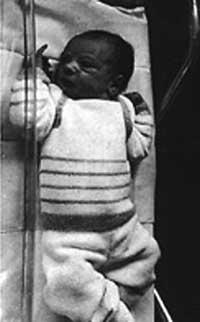
A large number of sperm in search of the oculus is the natural reproduction system of the human being. To this natural route of pregnancy was added in 1978 another: the probeta-ume. The news came from the hand of Dr. Robert Edwards of the University of Cambridge. In November 1977, Edwards' research team removed an oculus from Mrs. Lesley Brown, a woman who had an injury that prevented pregnancy in the fallopian tube. The egg was placed in a cup to be fertilized by a sperm acquired by John Brown, Lesany's husband. After a few days, they took the embryo resulting from fertilization and introduced it into the uterus of Lesany.
The pregnancy was normal, it went through normal circumstances. On July 25, 1978, he was born at Oldham Hospital, Louise Brow. Dr. Edwards knew that he had made a gap in the history of medicine and humanity, but surely he would not have imagined the future doors of the reproductive systems of his achievements. Since Louise Brown was born, a quarter of a century has passed and since then more than 1,000,000 children have been born.
Assisted reproduction techniques are used when fertilisation is not possible by itself. In summary, these techniques allow to manipulate germ cells, sperm cells, eggs and embryos to achieve pregnancy. The basic systems are insemination and in vitro fertilisation, within which several procedures are included.
Artificial insemination: It consists of placing sperm in the sexual organs of the woman. Depending on where the sperm are placed, insemination can be done inside the vagina, inside the uterus, cervical, etc. The seed can be a couple or a donor. It is necessary to excite the ovary by hormones.
Conventional in vitro fertilisation. After the patient's excitation, through laparoscopic surgery or intravenous ultrasound, the oocyte intake — immature eggs — is done. These oocytes are isolated and come in contact with the sperm so that they can fertilize. The resulting embryo is placed in the uterus.
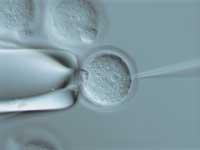
Intratubar transfer of gametes (GIFT). A pair of obocytes and at least 40,000 sperm are placed in the fallopian tube. Its use is rare as it is done under general anesthesia.
Intratubar transfer of cytotes (TIF). After conventional in vitro fertilisation, the cytotes – embryos that come out of fertilisation – are recovered and two or three of them are placed at one end of the fallopian tube. The operation is performed with laparoscopy, but at present it is hardly performed.
Intraubar embryonic transfer (TET). The embryos obtained after conventional in vitro fertilisation are taken in the initial phase of fragmentation and are applied in the female reproductive system.
Intracytoplasmic sperm injection (ICSI). A sperm is taken and inserted into the obocito. This is done with the help of a microscope. Two or four days later, the embryo is taken and placed in the woman's uterus.
Intracytoplasmic injection of spermatide. The system is the same as the previous one, but instead of using sperm, sperm cells are used, precursors of the sperm. The spermatides are taken from the testicles.
Joint cultures. After conventional in vitro fertilisation, the embryos are kept in a cup until blastocysts.
Buletina
Bidali zure helbide elektronikoa eta jaso asteroko buletina zure sarrera-ontzian











